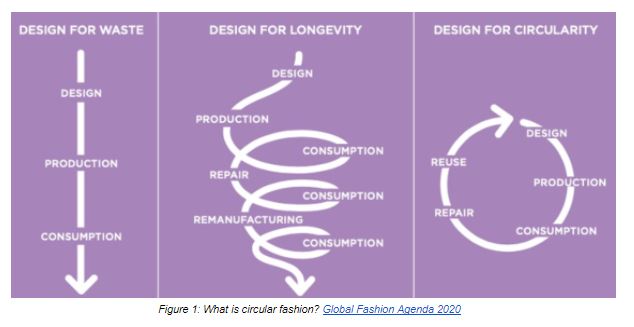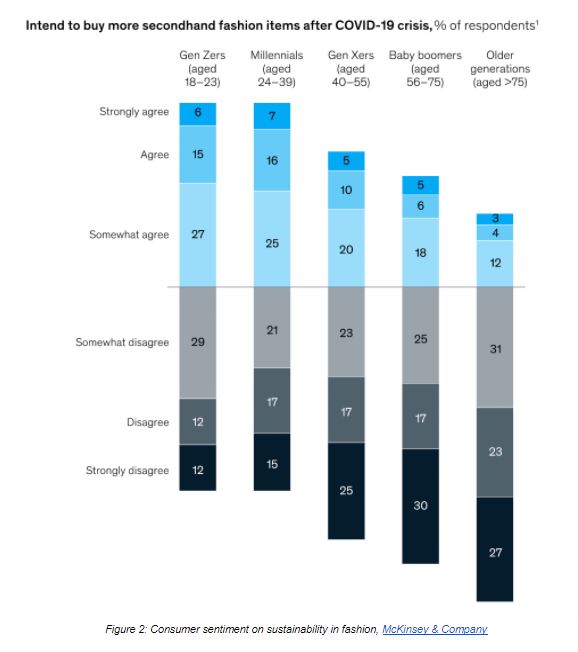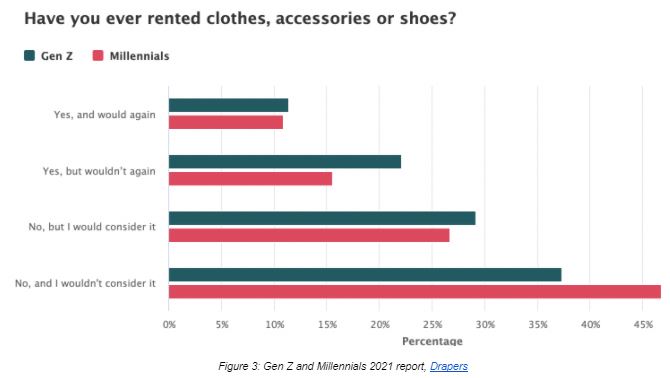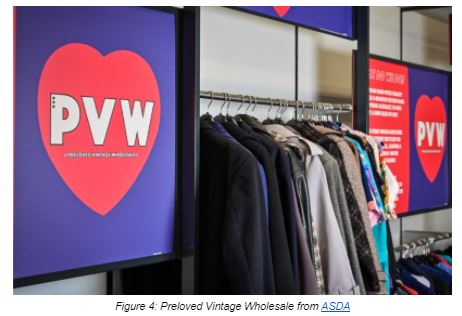With shops now open, many people may be looking to revamp their wardrobe to be less couch-chic and more social-gathering appropriate. But how can we do this sustainably? We consider some evidence of the circular future of fashion and whether insights from behavioural science can help.
Fashion is integral to the economy, employing over half a million people in the UK alone. But did you know that some estimates rank the industry’s contributions to climate change higher than international aviation and shipping combined?
Encouragingly, the landscape is evolving, both in supply and demand. Gucci has gone seasonless, and in the wake of the pandemic, 47% of Gen Z and millennial consumers consider sustainability and ethics more than ever in how they shop.
However a fundamental challenge remains – how do we turn underlying motivation into tangible behaviour?
The future is circular
The most sustainable clothes are the ones we already own but encouraging people to buy less will be hard, not least to get industry support. It would require a big, perhaps unrealistic, shift in norms – buying clothes satiates our desire for novelty, social status and self-expression, as well as our practical needs.
Circular business models – such as second-hand and rental – allow consumers to satisfy their craving for new more sustainably, whilst still creating value for retailers.

Twice as nice
WRAP estimates that giving clothes just 9 more months of use would reduce carbon, water, and waste footprints by around 20–30%.
Recent years have seen a range of new initiatives backing pre-loved items, from Oxfam’s #SecondHandSeptember campaign, to digital peer-to-peer marketplaces like Depop and Vinted.
However, whilst the future is looking bright for some consumers – 90% of Depop users are under 26 and the app saw a 300% year-on-year increase in items sold during the pandemic – this growth is not comparable across all generations.

Rent, return, repeat
Almost 1 in 10 shoppers reveal that they have bought clothes to wear once, post a photo and then return. Rental services are well placed to fill this gap, offering consumers ongoing novelty at a relatively lower cost.
Services by Selfridges and Moss Bros demonstrate how this business model can apply from occasion to office wear. However, there are evidently still barriers to overcome. More than a fifth of Gen Z shoppers say they had tried renting but would not again.

Behavioural science in fashion
Scalable solutions will need to be commercially appealing, but also satisfy the full range of consumer’s motivations. Below are 3 ideas we think are worth exploring:
- What’s the real price-tag? One barrier to renting is simply that it feels expensive. But is this because we overestimate how many times we wear our clothes? Many items would look favourable on a cost-per-wear basis, but we need data. With more and more of us tracking spending, companies like Monzo could help – “You spent £800 on clothes last year. Are these now hiding in the back of your wardrobe? Why not try a £50/month subscription service to access all the latest trends instead”. Another way to break down cost barriers is to “rent-first, buy later”. Less upfront cost, less risk (both things we don’t like).
- Look at the label: Sometimes labels imply inferiority. Just as framing a meat-free meal as ‘field-grown’ nearly doubled the number choosing it, would pre-loved trump second-hand? Are the terms sustainable and circular helpful? This area feels ripe for testing.
- A new normal for fashion: Perhaps the bigger play is framing the whole circular experience as normal. First, if we overestimate how much our peers are ‘buying new’, correcting this misperception may help. (How much do you think people spend on clothes? Take a 2-question quiz to find out). Second, for rental, can we still feel like we still ‘own’ the clothes – they are just stored (and cleaned) elsewhere, in my digital wardrobe, whenever I need it? Finally, the more shops sell second-hand and new, side by side, the more normal it will feel. The UK retailer Asda’s exciting move in this direction should offer insights into this integrated strategy.

Research in this area is relatively limited and we’d love to hear your thoughts. If you’re interested in partnering with BIT to explore this area further, please get in touch here.




